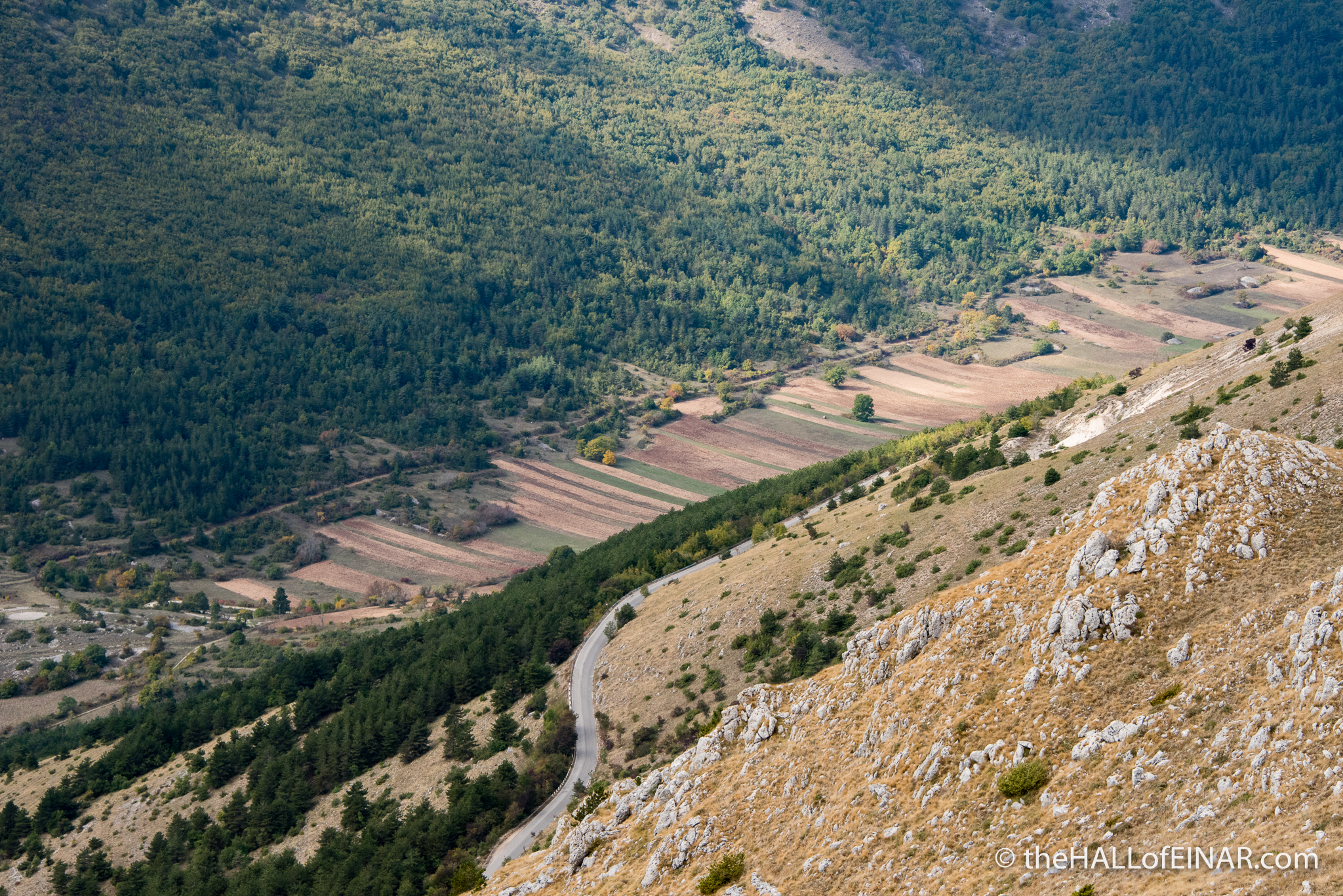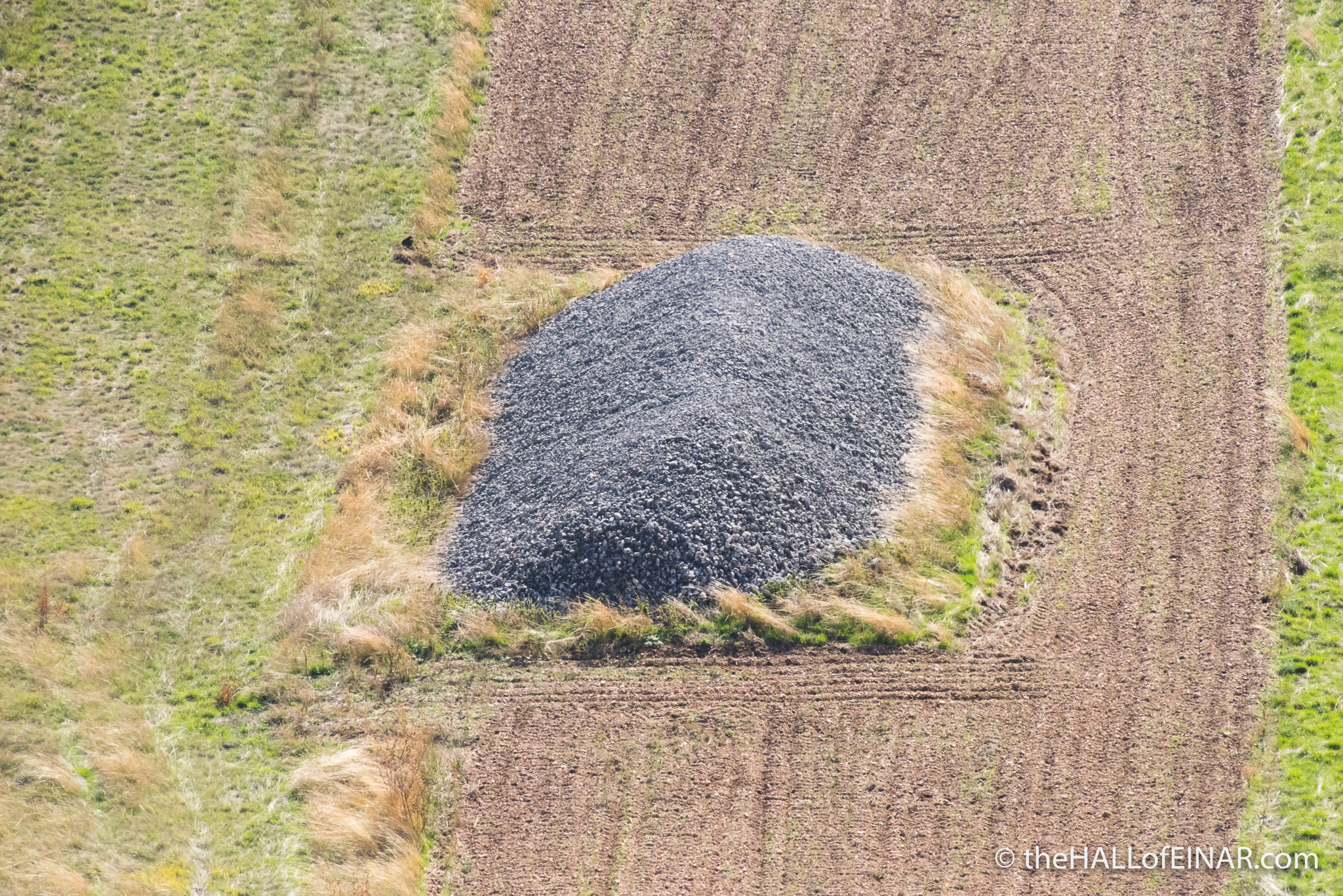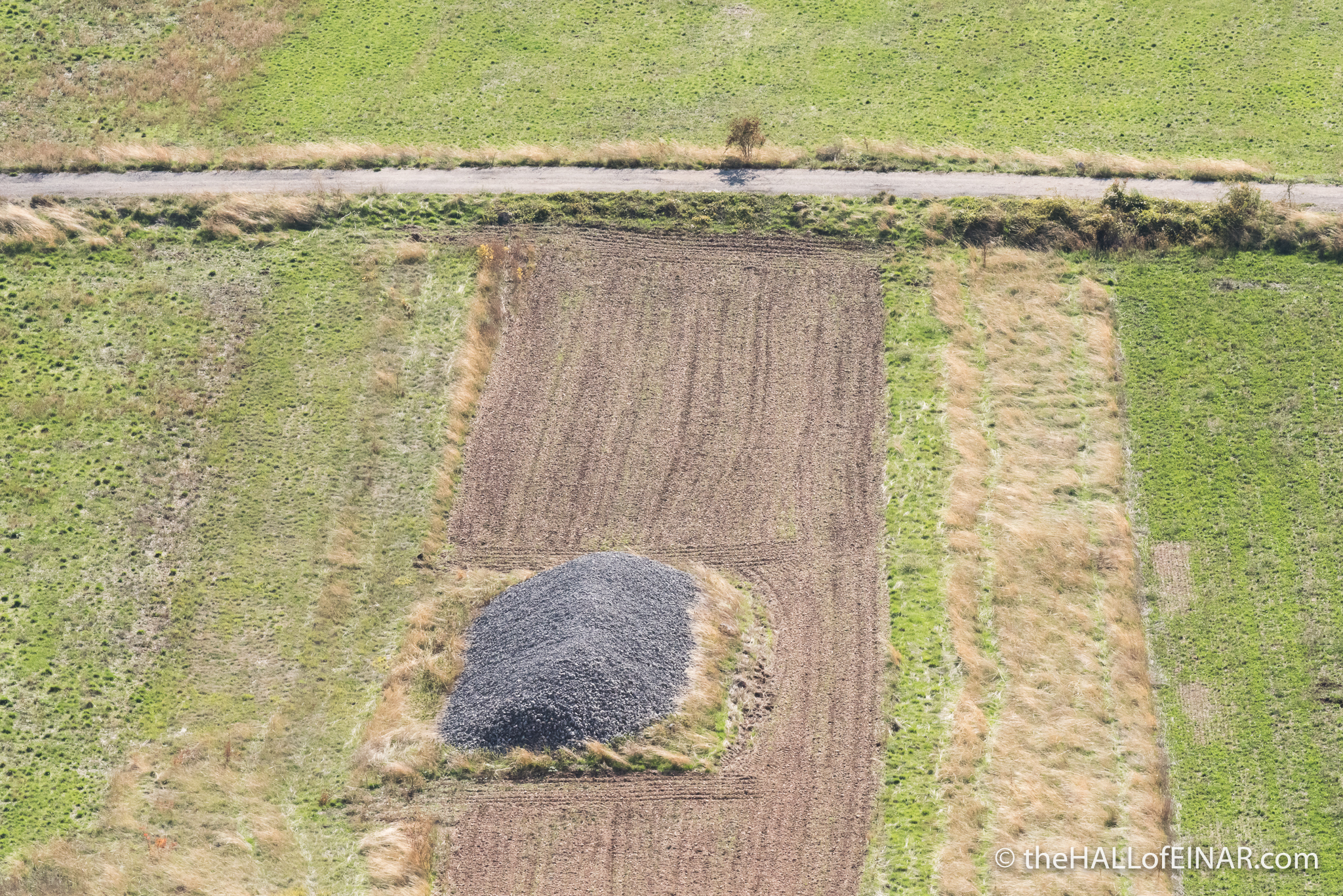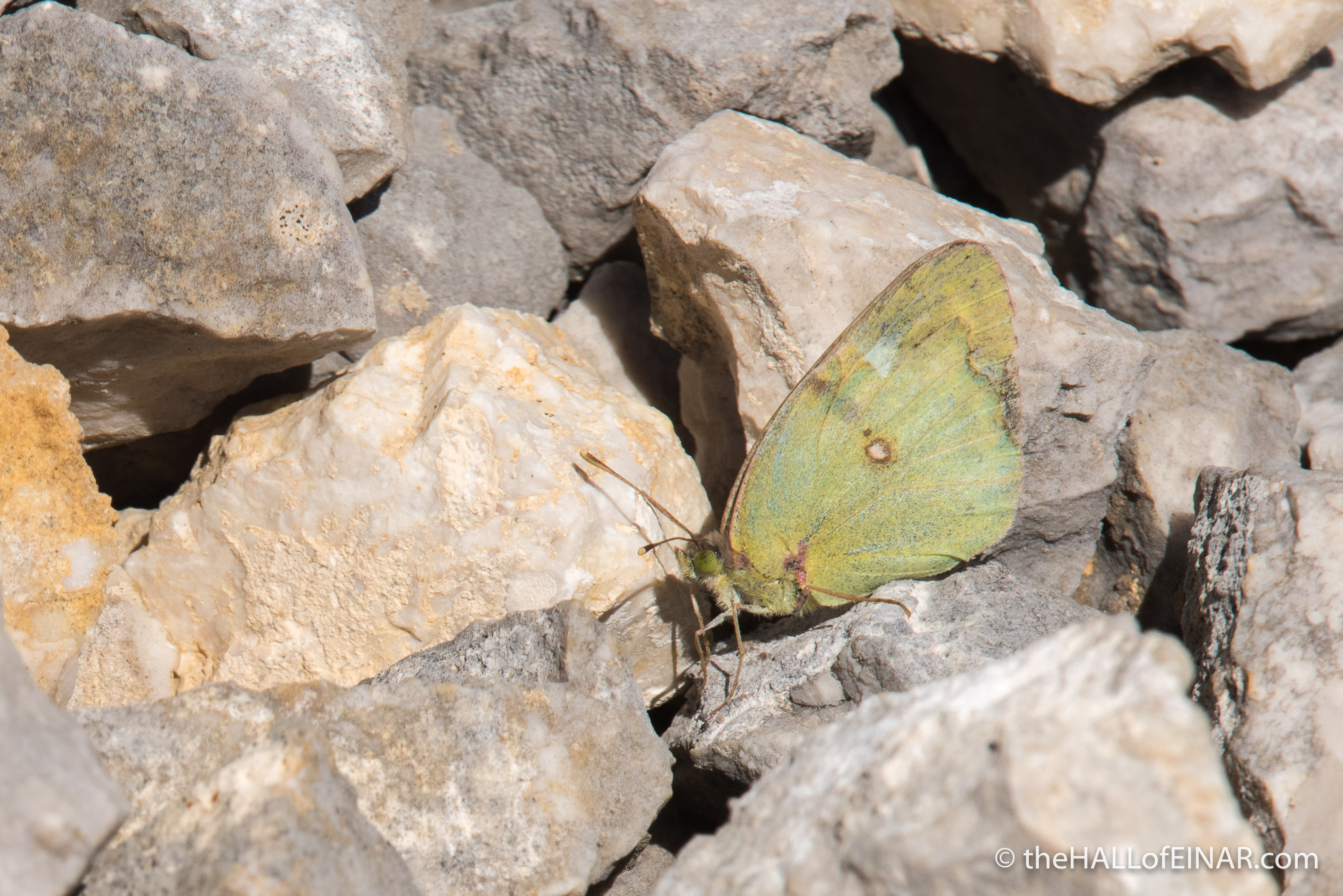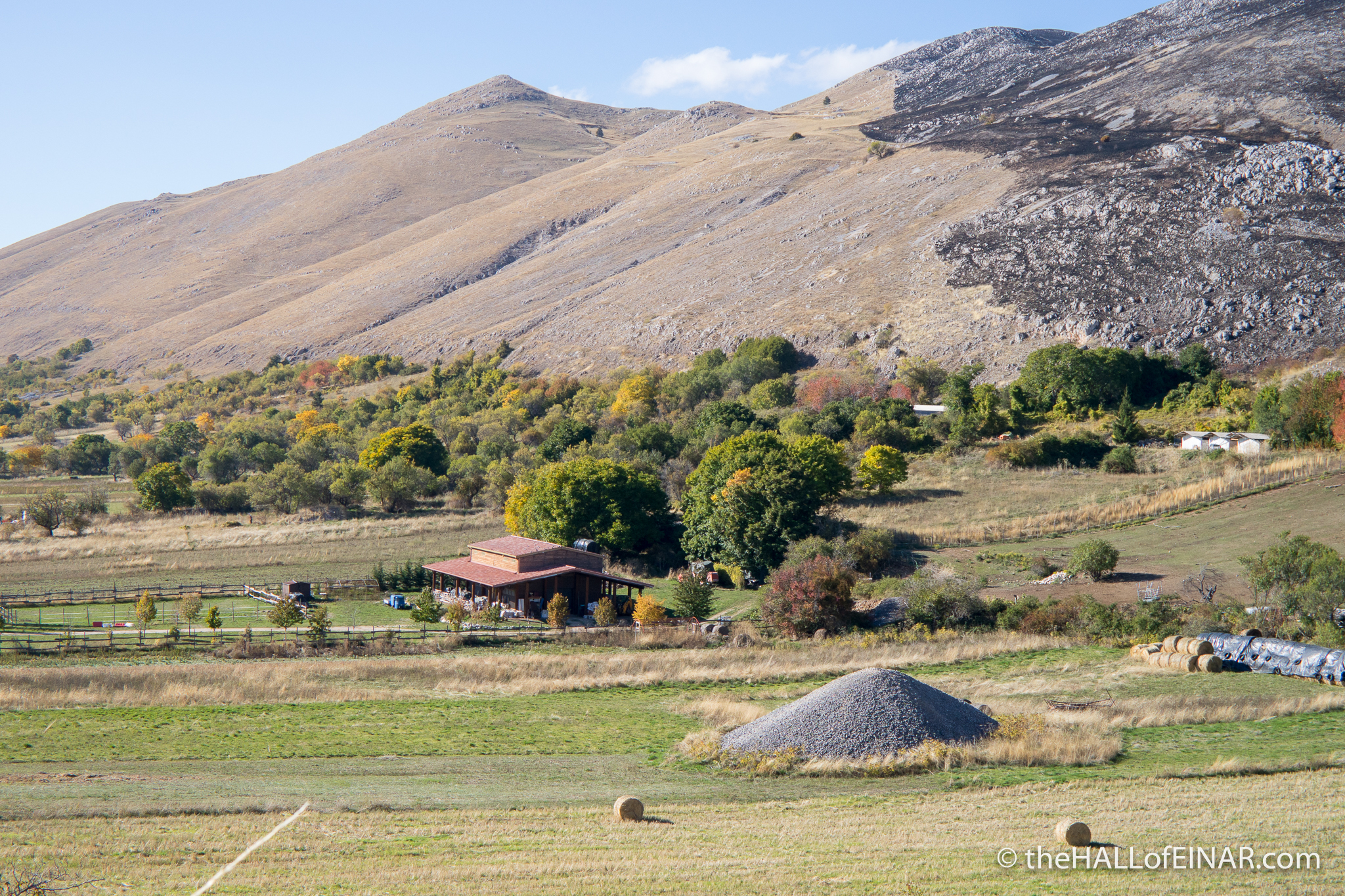Stony Ground
Farming is a tough business. I often describe farmers as ‘scratching a living from the land’. There’s the weather, uncertain prices, problems in getting labour and changes in demand to cope with. And I haven’t even begun to mention the hours. On top of all that there’s the soil. Soil is one of every country’s most valuable and least valued assets. Try putting a price on it. What do you think its insurance value would be? How much would it cost to replace?
Here there’s only a very thin strip of cultivated land on the bottom of the steep u-shaped valleys in Gran Sasso e Monti della Laga National Park. All of the narrow strips of land have been ploughed across rather than along the valley. I’m sure I must have learned why that is in geography:
Travelling through L’Aquila we can see piles of stones everywhere surrounded by long grass verges. The limestone here means the ground is exceptionally stony:
It’s taken the farmers years to take these stones out of the soil and throw them into piles. They must have stopped so many ploughs.
They form mini nature reserves, busy with butterflies and lizards and colonised by plants which suit the dry conditions. Here’s a Clouded Yellow butterfly Colias croceus:
Some of the piles seem as big as houses:
That’s such a huge amount of work. They have my respect.
